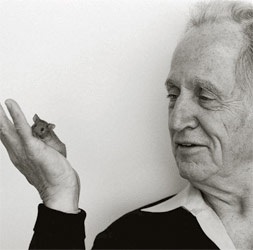
Stem cell research is a contentious issue, but its value for the future of medicine is far-reaching, and for this reason the 2007 Nobel Prize in Physiology or Medicine was awarded to Maria Capecchi, Martin Evans and Oliver Smithies for their pioneering work on specific gene modifications in mice using embryonic stem cells. Their work, using what is called 'knockout' technology, enables scientists to modify specific genes in mammals and to raise offspring that carry the modified gene, and thus determine the role of specific genes in development, physiology, and pathology. Evans identified and isolated the embryonic stem cell of the early embryo. Capecchi and Smithies, independently of each other, discovered how homologous recombination of segments of DNA can target genes and developed genetically modified mice, which have become indispensable in medical research.
Capecchi had a poor start in life. Born in Verona, Italy, in 1937, his pilot father was killed during WWII and his mother - Lucy Ramberg, a poet who never married Mr. Capecchi - was sent to Dachau concentration camp for her anti-fascist views in 1941, leaving young Maria to a near feral life until the war's end when, miraculously, his mother found him again after a year's search. The pair moved to America, living with Lucy's brother and sister-in-law on a Quaker commune, and Maria developed an interest in science from his uncle's work as a physicist. He gained a double BSc in chemistry and physics at Antioch College, Ohio, in 1961, and progressed to MIT to study physics and mathematics. Even then, however, he wanted to work on genetics and DNA pioneer James Watson took him under his wing at nearby Harvard where he gained his PhD in biophysics in 1967.
Capecchi remained at Harvard, rising to Associate Professor of biochemistry in 1971. However, he preferred the longterm view of experiments at the University of Utah and joined the faculty as a Professor of Biology in 1973, remaining there ever since. When Capecchi first applied for a grant from the National Institutes of Health in 1980 he was told his work was "not worthy of pursuit" (a mistake they later rectified), but he persevered and by 1989 he developed the first mice with targeted mutations. Since 1988 he has been an investigator of the Howard Hughes Medical Institute; since 1989, a Professor of Human Genetics at the University of Utah School of Medicine. In 1993 he was made Distinguished Professor of Human Genetics and Biology at Utah. He is also co-chairman of the Department of Human Genetics.
Capecchi, whose award made a fine 70th birthday present, is married to Laurie Fraser. They have a daughter and, as a result of the Nobel publicity, Maria now has a half-sister. Marlene Bonelli, was given up for adoption before the war and raised in Austria. She assumed her mother and half-brother were dead but recognised his name when the prizes were announced.
This adapted text and the picture of the Nobel Laureate were taken from the book: "NOBELS. Nobel Laureates photographed by Peter Badge" (WILEY-VCH, 2008).
Picture: © Peter Badge/Lindau Nobel Laureate Meetings
